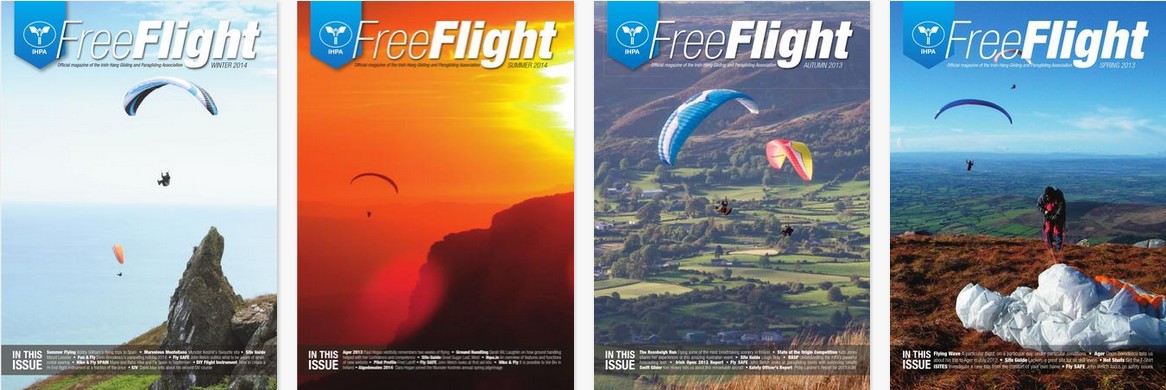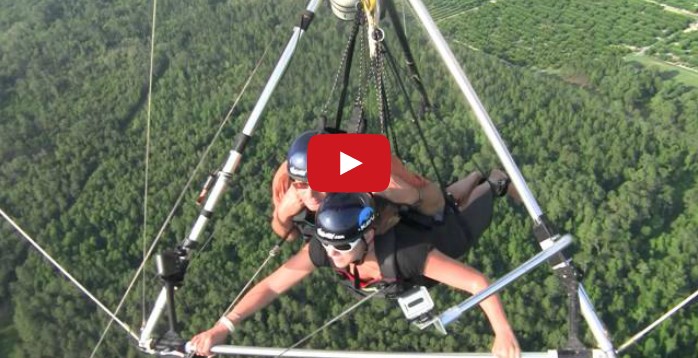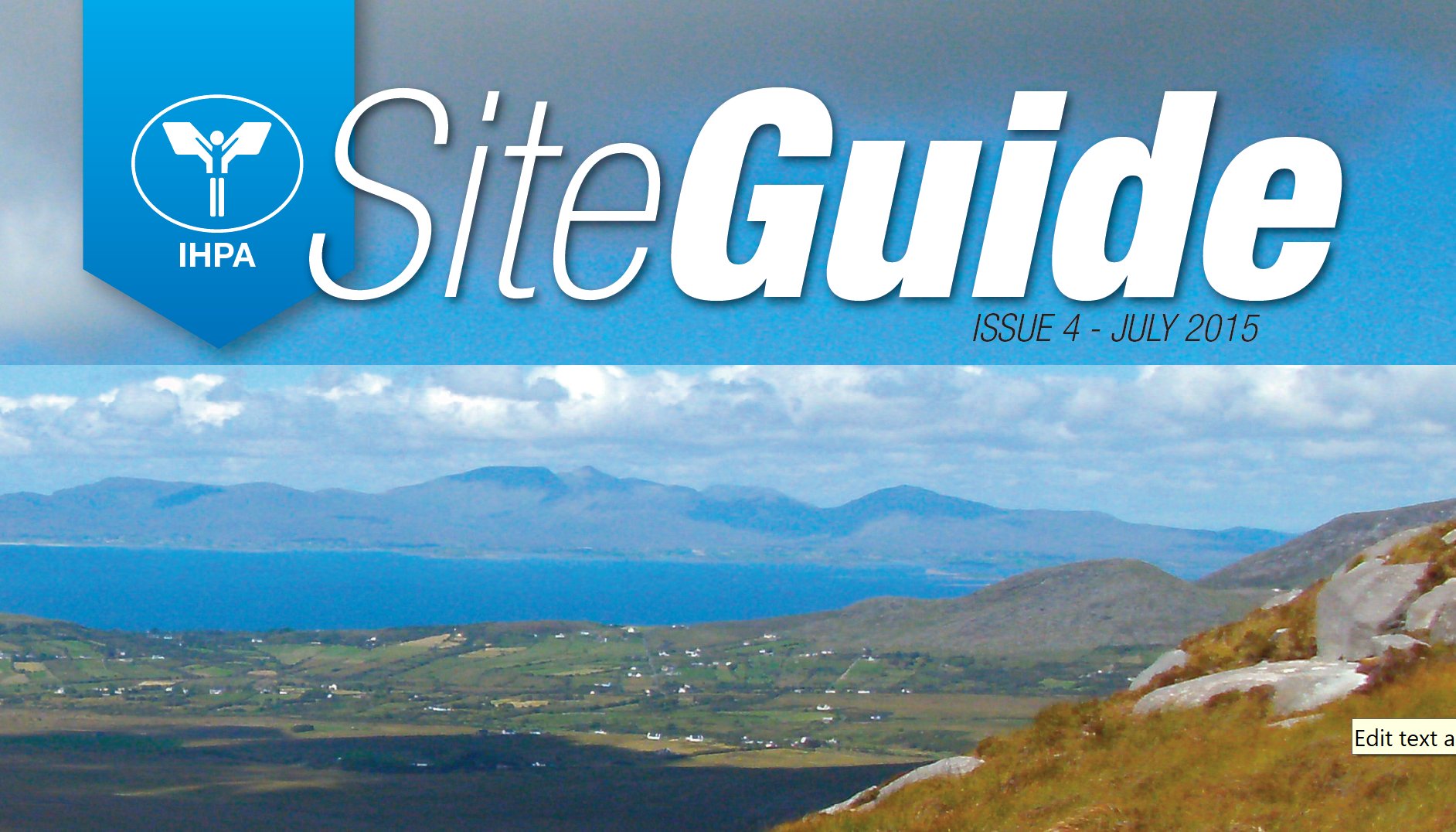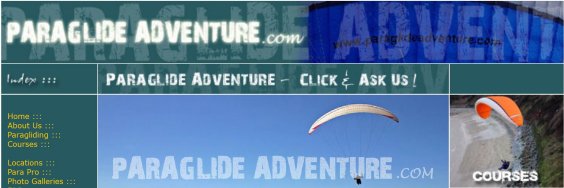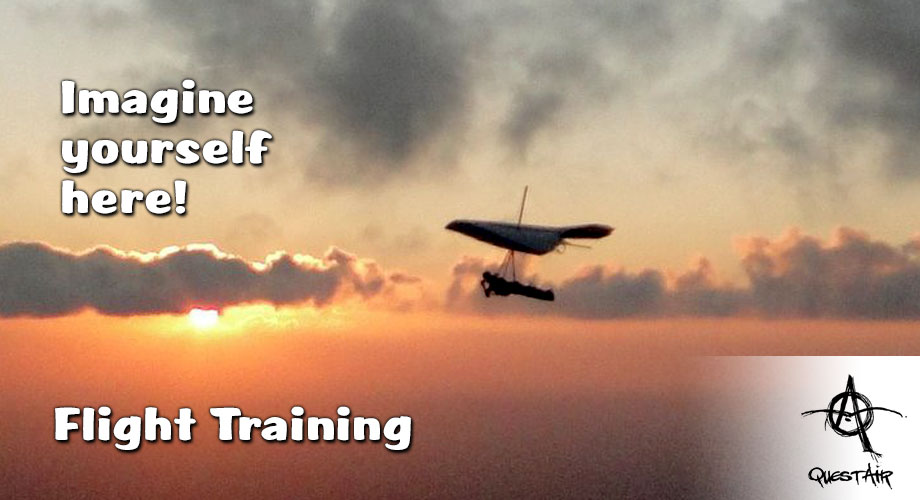Para Pro 1
Para Pro 1 - Student Pilot
Experience Requirements: Students wishing to apply for a Para Pro 1 rating must, under the direct supervision of an Instructor:
- Complete a minimum of three days instruction.
- Demonstrate their proficiency in ground handling.
- Completed a minimum of ten low flights to the satisfaction of their instructor.
Airmanship Requirements and Operating Limitations:
- All flights must be conducted with the instructor in direct contact with the student, by radio, at all times, so that instructions may be delivered to the student in a clear and calm manner. Reliance on pre-flight instructions or shouted instructions, once airborne, is not acceptable. The student’s radio should be mounted on or near the shoulder of the harness, with the volume adjusted to allow for easy hearing.
- The instructor must be convinced that the student is able to take care of their own safety while ground handling or conducting low level flights, and that they have mastered the knowledge and skill requirements specified for Para Pro 1 before allowing them to continue to Para Pro 2.
- Students must conduct all their training activities under the direct supervision of a Certified Flying Instructor. They are not permitted to attempt or practice any training activities outside of the training school environment.
- Students must attach a broad red ribbon to their harness, such that it is visible when ground handling and in flight, to alert other pilots to the fact that they have limited control of their wing and to give the student plenty of space.
- Students training towards Para Pro 1 must not attempt to fly at altitude, as per Para Pro 2. They are restricted to ground handling and low flights, generally not exceeding 50 metres above the ground.
- Students must not attempt to launch if other gliders are in the air anywhere near their area of operations. Instructors will limit airborne training activities such that there is only ever one glider in the air at a time.
- Students are not permitted to attempt or engage in ridge soaring, thermal soaring or cross country (XC) flying.
- Students training towards Para Pro 1 are restricted from training in all but the very lightest of winds, not exceeding 10mph (16Km/h) straight up the hill. Conditions must be smooth and stable at all times with no gusting or thermal influence.
- Students are restricted to training on either flat ground or a beginner’s hill, which, ideally, is a smooth gentle slope with very low vegetation, grass, peat-moss, heather or sand, with a profile that allows for low flights with the type of glider in use. The take-off and landing areas and the area in between should be free of obstacles and other hazards, with a good clear margin on either side. It should be possible to do the whole flight in a straight line without the need to manoeuvre.
- All flights must be written up in the Student’s Training Record and Log Book.
- Students are not permitted to fly in competitions.
Para Pro 2
Para Pro 2 - Student Pilot
Experience Requirements: Students wishing to apply for a Para Pro 2 rating must, under the direct supervision of an instructor:
- Complete a minimum of six days flying.
- Complete a minimum of thirty flights, at least ten of which must be altitude-gliding flights exceeding 50m or 160 feet above the ground.
Airmanship Requirements and Operating Limitations:
- The instructor must be convinced that the student is able to take care of their own and other’s safety while ground handling or conducting altitude flights, and that they have mastered the knowledge and skill requirements specified for Para Pro 2, before allowing them to sit the written exam.
- Students must conduct all their training activities under the direct supervision of a Certified Flying Instructor. They are not permitted to attempt or practice any training activities outside of the training school environment.
- All flights must be conducted with the instructor in direct contact with the student, by radio, at all times, so that instructions may be delivered to the student in a clear and calm manner. Reliance on pre-flight instructions or shouted instructions, once airborne, is not acceptable. The student’s radio should be mounted on or near the shoulder of the harness, with the volume adjusted to allow for easy hearing.
- Students must always fly with a broad red ribbon to their harness, such that it is visible when ground handling and in flight, to alert other pilots to the fact that they have limited control of their wing and to give the student plenty of space. The red ribbon may be removed once the student has been awarded a Para Pro 2 rating and has accumulated an additional ten hours in the air. Student and intermediate pilots are encouraged to continue flying with a red ribbon until they feel confident in the air with other pilots. The red ribbon is for there for their own and other’s safety.
- Students training towards Para Pro 2 must not attempt any soaring flights, as per Para Pro 3. They are restricted to ground handling and flights away from the hill, but high enough height and clearance to be able to manoeuvre relatively freely.
- Students must not attempt to launch if there other gliders are in the air anywhere near their area of operations. Instructors will initially limit airborne training activities such that there is only ever one glider in the air at a time.
- Students are not permitted to attempt or engage in ridge soaring, thermal soaring or cross country (XC) flying.
- Students training towards Para Pro 2 are restricted to training in winds not exceeding 10mph (15Km/h) straight up the hill. Conditions must be smooth and stable at all times with no gusting or thermal influence.
- Students are restricted to training on either flat ground or an intermediate hill, where take-off, landing and the flight in between is considered by the instructor to be easy and with good margins of clearance from any obstacles or other safety hazards. The landing area should be large and easy to reach by normal manoeuvring with a good margin of height, and clearly visible from the take-off area.
- All flights must be written up in the Student’s Training Record and Log Book.
- Students are not permitted to fly in competitions.
- A student’s signed application for a Para Pro 2 rating must be accompanied by, and will not be issued in the absence of:
- A completed and signed IHPA Student’s Membership Application form (if the applicant is not already a member.)
- Evidence of an existing insurance policy.
- A signed and witnessed IHPA Indemnity Waiver form.
- A completed Feedback Questionnaire.
Para Pro 3
Para Pro 3 - Novice Pilot
Experience Requirements: Under the indirect supervision of an Instructor or a nominated Coach, Student Pilots wishing to apply for a Para Pro 3 rating must:
- Complete a minimum of sixty flights totalling not less than ten hours in the air.
- These flights must be spread over at least five different sites, and to ensure diversity of conditions, at least three of the five sites must be inland and not coastal.
- The novice pilot must have spent a minimum of two hours in the air over any three consecutive flights since being awarded Para Pro 2.
Airmanship and Operating Limitations:
- It is incumbent upon the novice pilot to seek advice from the supervising Instructor or Coach about the site, the prevailing conditions and their proposed activities before the start of the day’s training.
- The instructor must be convinced that the novice pilot is able to take care of their own and other’s safety while ground handling, conducting altitude or basic soaring flights, and that they have mastered the knowledge and skill requirements specified for Para Pro 3, before allowing them to sit the written exam.
- Novice pilots must conduct all their training activities under the indirect supervision of a Certified Flying Instructor or their nominated Coach. They are not permitted to attempt or practice any training activities outside of the training school environment.
- Two-way radio communication with the supervising Instructor or Coach is strongly recommended so that the novice pilot may receive instructions or warnings of changing weather conditions. A helmet mounted speaker and microphone with a hand operated Push-To-Talk (PTT) switch is recommended. Pilots should restrict the operation of their 2m-band radios to the frequencies between 143.750MHz and 143.950MHz.
- Novice pilots must always fly with a broad red ribbon to their harness, such that it is visible when ground handling and in flight, to alert other pilots to the fact that they have limited control of their wing and to give the novice pilot plenty of space. The red ribbon may be removed once the novice pilot has been awarded a Para Pro 2 rating and has accumulated an additional ten hours in the air. Novice and intermediate pilots are encouraged to continue flying with a red ribbon until they feel confident in the air with other pilots. The red ribbon is for there for their own and other’s safety.
- Novice pilots training towards Para Pro 3 must fly with, and know how to use, an appropriately sized reserve parachute on all flights.
- Novice pilots training towards Para Pro 3 must fly with a properly adjusted “Speed Bar” system attached to their harness and wing on all flights.
- Novice pilots training towards Para Pro 3 must not attempt any advanced soaring flights, as per Para Pro 4. They are restricted to flying in smooth ridge lift in stable conditions with little or no thermal activity so that they can practice and enjoy soaring flight within safe limitations.
- Novice pilots should be careful not to turn after launching before they are established in a comfortable flying position in their harness, with good speed and direction control.
- Novice pilots should not attempt to return to the lift band if they have flown through or out of it.
- Novice pilots should not attempt to ridge soar in marginal lift, strong or gusting winds, or in turbulence.
- Novice pilots should not attempt any cliff launches or cross-wind launches, or attempt to top land or land onto the hillside.
- Novice pilots must not attempt to launch or fly if the air space is at all crowded by the activities of other gliders in the air.
- Novice pilots are not permitted to attempt or engage in thermal soaring or cross country (XC) flying.
- Novice pilots are not permitted to fly in competitions.
- Novice pilots training towards Para Pro 3 are restricted to training in winds not exceeding 15mph (15Km/h) blowing within 15° of straight up the hill. Conditions must be smooth and stable at all times with no gusting or thermal influence.
- Novice pilots training towards or applying for a Para Pro 3 rating must be current members of the IHPA and have a current insurance policy.
- All flights must be written up in the Student’s Training Record and Log Book.
Para Pro 4
Para Pro 4 - Intermediate Pilot
Experience Requirements: Novice Pilots wishing to apply for a Para Pro 4 rating must:
- Log a minimum of twenty hours airtime, of which a minimum of five hours must have been spent in thermal soaring conditions and another five hours in ridge soaring conditions since being awarded Para Pro 3.
Airmanship Requirements and Operating Limitations:
- An intermediate pilot with a Para Pro 3 rating is no longer dependant on having an Instructor or Coach on the hill to advise them each time they wish to fly. It is incumbent on the intermediate pilot to seek the advice of other, more senior, pilots who are flying a site.
- Responsible pilots never fly alone. If they are not flying with other pilots, then they stay in contact, by two way radio, with someone on the ground who can look out for them and retrieve them should they fly cross country or get into difficulties.
- Pilots training towards Para Pro 4 must fly with a 2m-band two-way radio.
- Pilots training towards Para Pro 4 must fly with, and know how to use, an appropriately sized reserve parachute on all flights.
- Pilots training towards Para Pro 5 must fly with a properly adjusted “Speed Bar” system attached to their harness and wing on all flights.
- Pilots training towards or applying for a Para Pro 4 rating must be current members of the IHPA and have a current insurance policy.
- Pilots training towards Para Pro 4 are advised not to fly in winds exceeding 15mph (25Km/h) blowing within 30° of straight up the hill.
- All flights must be written up in the Pilot’s Log Book.
Para Pro 5
Para Pro 5 - Advanced Pilot
Experience Requirements: Intermediate Pilots wishing to apply for a Para Pro 5 rating must:
- Log a minimum of one hundred hours airtime and have successfully completed at least five cross country flights, in various lift, of no less than five miles, or seven kilometres, each. Ridge soaring flights or flying along the same ridge, only, is not acceptable. (i.e. A run down the Blackstairs Mts. does not count!)
Airmanship Requirements and Operating Limitations.
- Responsible pilots never fly alone. If they are not flying with other pilots, then they stay in contact with someone on the ground who can look out for them and retrieve them should they fly cross country or get into difficulties.
- Pilots training towards Para Pro 5 must fly with a 2m-band two-way radio.
- Pilots training towards Para Pro 5 must fly with a properly adjusted “Speed Bar” system attached to their harness and wing on all flights.
- Pilots training towards Para Pro 5 must fly with, and know how to use, an appropriately sized reserve parachute on all flights.
- Pilots training towards or applying for a Para Pro 5 rating must be current members of the IHPA and have a current insurance policy.
- Pilots training towards Para Pro 5 are advised not to fly in winds exceeding 15mph (25Km/h) blowing within 45° of straight up the hill.
- All flights must be written up in the Pilot’s Log Book.

